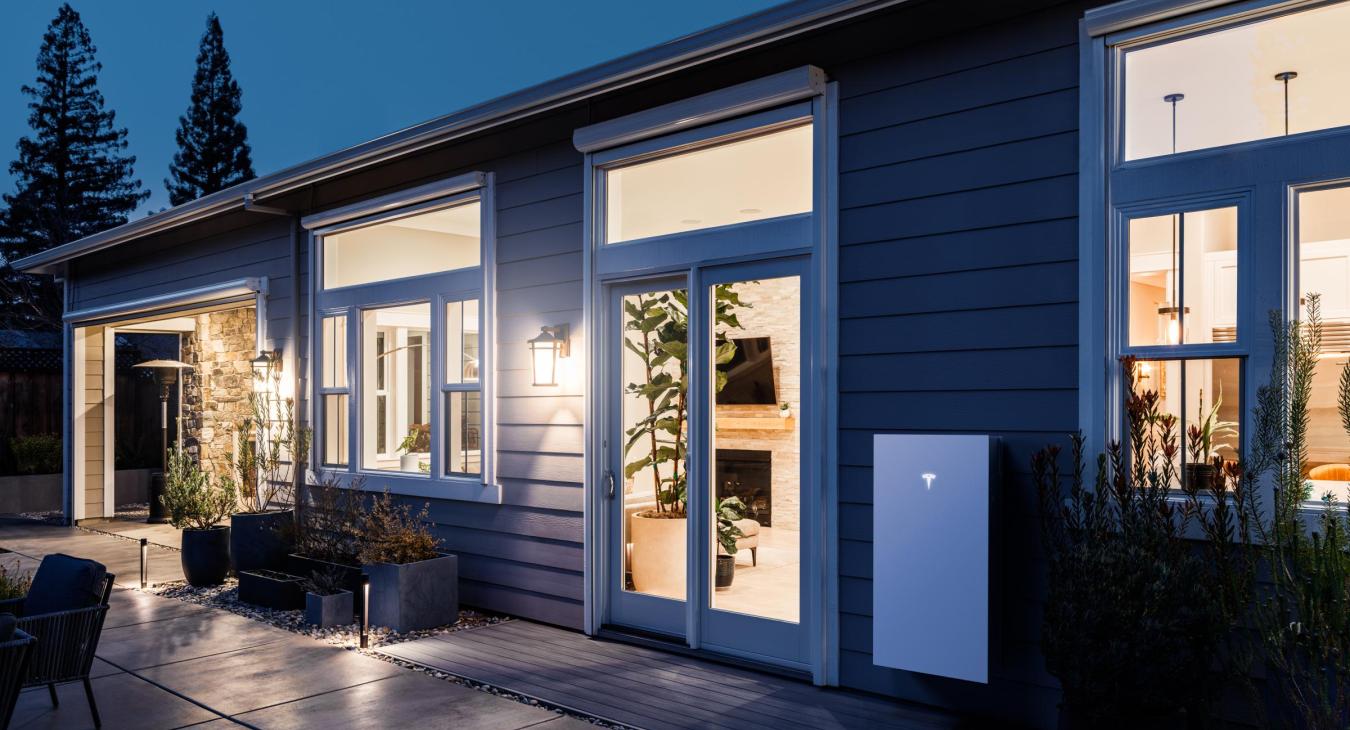By Scott Flood
We depend on reliable electricity more than ever before, which is why even the briefest service interruption can be incredibly frustrating. It’s no wonder many homeowners are taking a closer look at the latest battery-powered systems as backups during an outage.
Battery technology has advanced significantly in recent years, with batteries able to hold more electricity even as they shrink in size and cost. The same innovations that boosted the performance of electric vehicles (EVs) are being engineered into today’s battery-powered backup systems.
As their name implies, battery backup systems like Tesla’s Powerwall are essentially high-capacity batteries that store a set amount of electricity, which you can then use to power your home in the event of an outage. Some are constantly charged by the power grid, while others rely on solar panels for recharging.
Traditional standby generators use small internal combustion engines fueled by natural gas, propane or diesel. They can be connected to your home’s electrical panel and kick on automatically whenever the flow of electricity stops. Assuming you keep them refueled, most can operate for days at a time. However, some standby generators can be noisy, and nearly all produce smelly exhaust containing deadly carbon monoxide gas, so they can’t be operated indoors. Large standby generators are typically installed outdoors on a concrete pad, which may detract from your home’s curb appeal.
Most home battery backups are smaller than comparable generators. Because they don’t use combustion to generate electricity, there’s no danger of carbon monoxide exposure. That makes them safer and more environmentally-friendly than generators. Most can be installed in a small space indoors. Battery backups are also significantly quieter.
When a power outage occurs, battery backups start instantaneously, unlike generators that may take a few moments to spool up and reach operating speed. Battery backups also don’t need regular maintenance like oil changes or spark plug replacement, and there’s no need to store fuel.
Of course, battery-powered generators do present some disadvantages. The amount of power they deliver is limited by the capacity of their batteries. When they’re out of electricity, they may need hours of recharging before being used again, so they’re not as well-suited for lengthy outages. Energy-hungry appliances such as air conditioners and water heaters may drain the batteries’ capacity more quickly, so you may have to disconnect them during an outage. Fortunately, some battery backups are modular, allowing you to add capacity as needed. If you only need a few devices powered during an outage, consider a portable battery-powered system. These small, quiet backups can be used indoors to power smaller appliances, like your laptop, TV or microwave.
Generally, batteries require long charging times, so if an initial outage is quickly followed by another, they may not be able to respond. There are fast-charging systems on the market, but they carry substantially higher price tags. In fact, the upfront cost of a battery backup is more than a standby generator––in some cases, twice as much for comparable performance.
Like the one in your mobile phone, batteries in these systems can degrade over time. In five or 10 years, they may need to be swapped out with new batteries, adding to the overall cost. Being able to recharge battery backups with solar panels appeals to many homeowners, but the performance will depend upon the amount and angle of sunlight falling upon your roof.
So, is a battery-powered backup system right for your home? The answer is different for every homeowner, but whether you’re considering a battery system or a traditional standby generator, start by calculating the amount of power you need to keep your home’s systems and conveniences operating efficiently. Once you know that, you can determine which models are up to the task and calculate how long the device you’re considering can power your home. (If you have a family member whose health depends upon devices such as a CPAP machine or supplemental oxygen, be sure to factor that into your decision.)
Finally, whether you choose a battery backup or a traditional standby generator, make sure it’s designed to protect your home and all your electronics from power surges and other issues that may damage your TVs, computers and other sensitive electronics. That way, you won’t have to worry about remaining without them long after an outage has ended.

